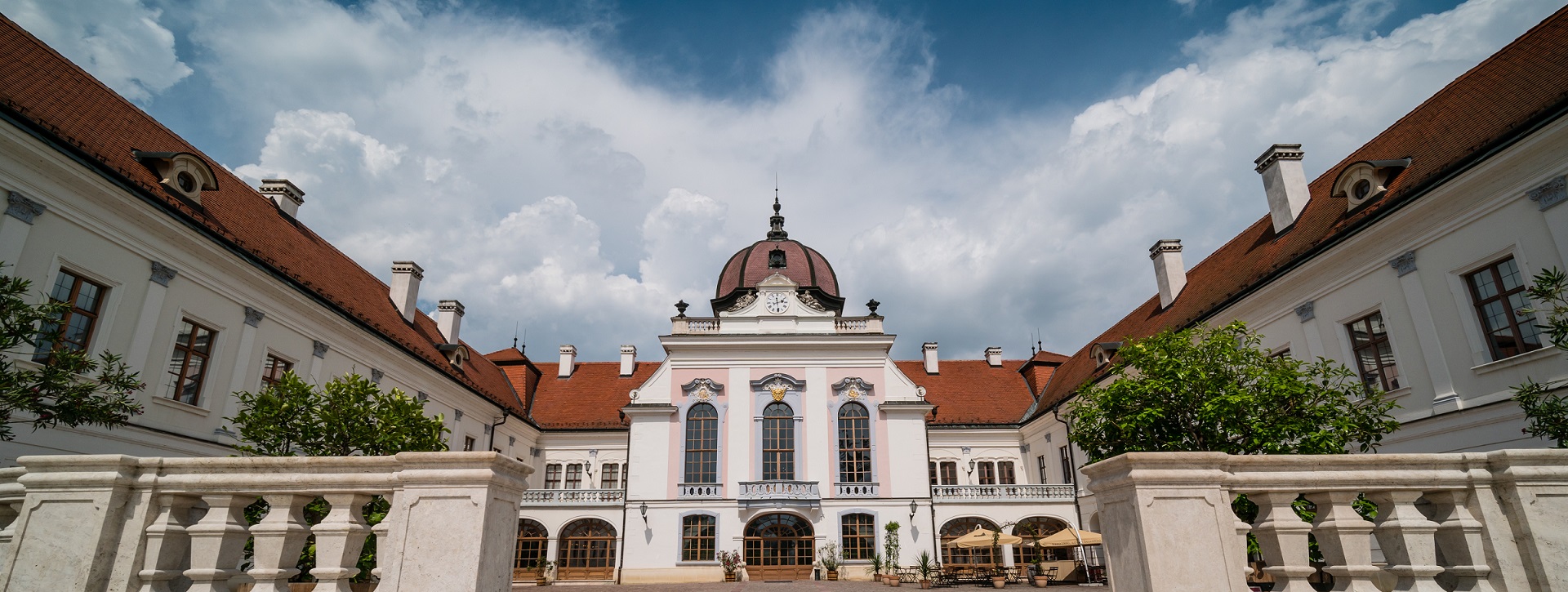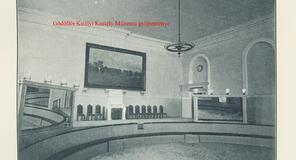
Queen Elizabeth's favourite place in the Royal Palace of Gödöllő
The Royal Palace of Gödöllő, the former residence of the Grassalkovich family with its beautiful parks and vast forests, became Queen Elizabeth's favourite residence in Hungary. Nowadays the palace is a prominent place of the Elizabeth cult.
Wilhelm Richter (1824-1892): Queen Elizabeth on horseback, 1870s,oil on canvas Collection of the Royal Palace Museum of Gödöllő
Elizabeth (1837–1898) was a famously good equestrian, and in the 1870s and 80s she was able to compete in the toughest pack hunts in England and Ireland. However, in addition to cross-country riding, she was also excellent in equestrianism, so it is not surprising that her favourite place in the palace of Gödöllő was the riding hall.
The riding hall of the Royal Palace of Gödöllő in 1896 (photo: Mór Erdélyi) and today (photo: András Dabasi), on the wall you can see Károly Lotz's painting Ménes: Ménes Collection of the Royal Palace Museum of Gödöllő
The riding hall was built by Antal Grassalkovich I. in the southern part of the palace in the middle of the 18th century. In 1879-80, according to Elizabeth's ideas, it was rebuilt, a menage was created in a circle with four large mirrors so that the queen could see the movements of the horses accurately. The ornament of the riding hall was a large painting depicting beautiful horses in the Hungarian wilderness. Károly Lotz (1833–1904): Ménes (1880) was placed in Queen Elizabeth's riding hall in Gödöllő in the autumn of 1881. The painting – which is the deposit of the Museum of Fine Arts – Hungarian National Gallery – has recently been found, identified and restored, so it can be seen again in its original location from February 2024.
Wilhelm Richter: Flick and Flock, 1877, reproduction of an oil painting, published in Egon Caesar Conte Corti: Elizabeth's biography "Die Seltsame Frau", published in 1934 Collection of the Royal Palace Museum of Gödöllő
In the 1870s, the queen bought circus horses and learned many horse stunts from Emilie Loisset and Elise Petzold, the prosthetic equestrian of the Renz circus. Elise was often in Gödöllő, became the queen's confidant, and Elizabeth gave her one of her favourite horses, Lord Byron, as a thank you. Friedrich Kaulbach painted a painting of the equestrian and her famous horse.[1]
The queen regularly held horse shows for her family members and invited guests, so the riding hall was an important place for socializing. A piano was placed in the gallery, and the incidental music of the performances was played many times by Count Mária Festetics.
The queen had several trainable horses, such as "Flick" and "Flock", the beautiful white steeds, whom she brought to Gödöllő in September 1878, and they had a very spectacular feat: Elizabeth stands in the middle of the "little riding school, sugar and bread in her hands, the horses are allowed in at the same time from different sides, they gallop towards their mistress, from whom they always get something good. They stop right in front of Elizabeth. One of her fond amusements is to introduce them to strangers when the horses suddenly rush in. Viewers are terrified."[2]
Excerpt from the Queen Elizabeth Memorial Exhibition, left
Friedrich Kaulbach: Elise Petzold on her horse Lord Byron, on the right is Wilhelm Richter (1824–1892): Queen Elizabeth in the riding hall of Gödöllő on horse Avolo, 1876. (photo: Marianna Kaján) Collection of the Royal Palace Museum of Gödöllő
Her other famous circus horse "Avolo" was painted in a special way by court painter Wilhelm Richter in 1876 in the riding hall of Gödöllő: Avolo gets down on knee, with Elizabeth sitting on a side saddle, wearing a riding dress. The famous painting was donated by reader Ida Ferenczy to the Queen Elizabeth Memorial Museum in the Buda Palace in 1908, today it is in the collection of the Hungarian National Museum and is a featured artwork of the Queen Elizabeth Memorial Exhibition of Gödöllő Palace. The painting will be on display at the Palace of Versailles for the occasion of the XXXIII Olympic Games from July 2 to Nov. 3, 2024 in a temporary exhibition on horseback riding entitled "Horse in Majesty – At the Heart of a Civilisation".
Marianna Kaján, historian-museologist
Wilhelm Richter (1824–1892): Queen Elizabeth in the riding hall of Gödöllő on horse Avolo, 1876, reproduction of an oil painting, published in Egon Caesar Conte Corti's biography Elizabeth "Die Seltsame Frau", published in 1934 Collection of the Royal Palace Museum of Gödöllő
[1] The picture decorated Elizabeth's suite in Gödöllő, nowadays it can be seen in the palace, at the Queen Elizabeth Memorial Exhibition.
[2] gr. Egon Cäsar Corti, Elizabeth, p. 288.
Read more



